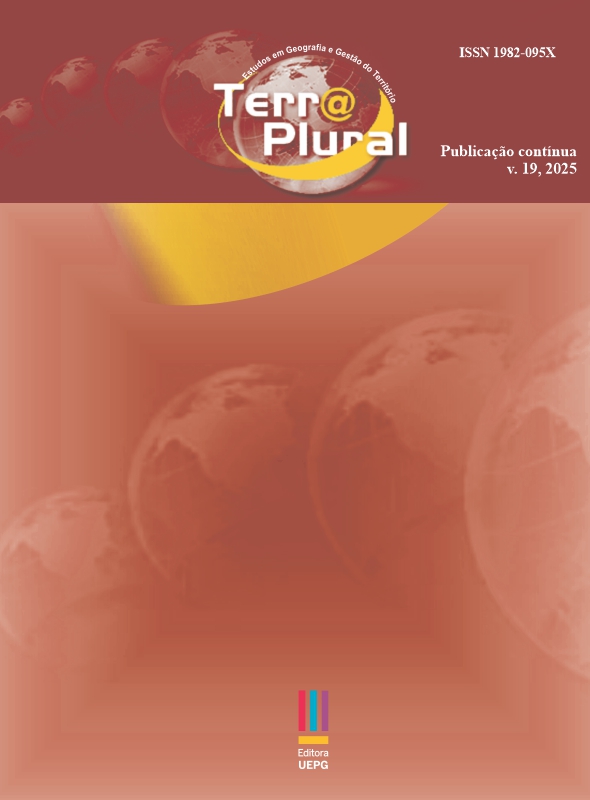Landscape and material culture on the Serra da Pedra Path in the southernmost region of Santa Catarina, Southern Brazil
DOI:
https://doi.org/10.5212/TerraPlural.v.19.22925.001Keywords:
Memory, colonization, economic cycle, heritageAbstract
Caminho dos Conventos is characterized as an important terrestrial route connecting the coast and the plateau in the southern extreme of the State of Santa Catarina. After the opening of the historic road, the settlements established along the route adapted to the novel needs of the troops passing through the region. This study aims to map and analyze the historical and cultural elements present along the Serra da Pedra Path and their relationship with the ‘Tropeirismo’. We employed fieldwork and the recording of material and immaterial goods found along the trail. The recorded material culture is divided into three sectors, which together make up 30 points that relate the material history of the region to Tropeirismo. Along this route commercial houses were built, as well as resting and housing places that served as a reference and support for travelers and troops. Currently, most of these material assets are preserved, some are used as residences, and others are abandoned. The immaterial points recorded are used to support the tourism along the trail.
Downloads
Downloads
Published
How to Cite
Issue
Section
License
Copyright (c) 2025 Edson Zilli, Juliano Bitencourt Campos, Mikael Miziescki, Jairo José Zocche, Jairo Valdati, José Gustavo Santos da Silva

This work is licensed under a Creative Commons Attribution-NonCommercial-NoDerivatives 4.0 International License.
Revista Terr@ Plural will obtain the auctorial rights for all published texts. This also implies that the text can be published anywhere in the world, including all rights on renewal, expansion, and dissemination of the contribution, as well as other subsidiary rights. The authors get permission to publish the contribution in other media, printed or digital, it may be in Portuguese or translation since the publication is credited to Revista Terr@ Plural. It allows the self-archiving of published articles in institutional repositories, thematic repositories, or personal web pages in the pdf version downloaded from the journal's site.















